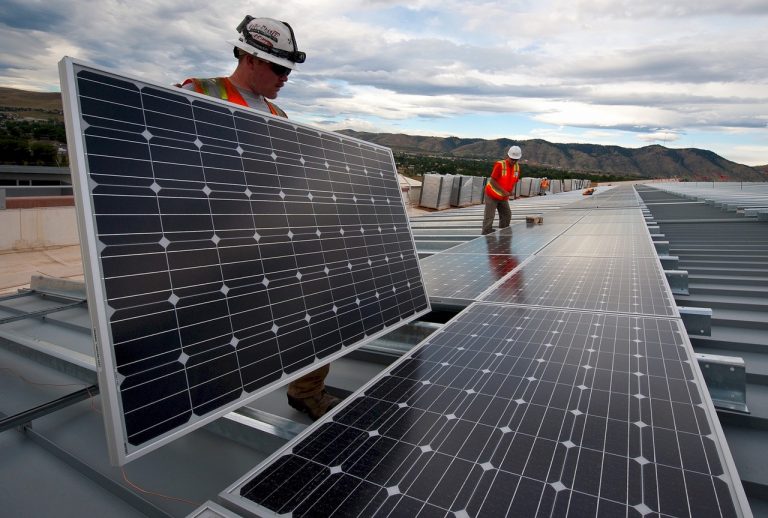Global warming isn’t just a fact; it’s becoming a fact of daily life. Climate change is causing epic droughts across the America West, triggering an urgent need for western states to conserve water. Agriculture is key to water conservation, and increasingly, farmers are rethinking just about everything about how they use water. The solutions involve a surprising mix of high-tech and low-tech approaches.
Drought and The West
2017 has been a relatively good year. In April, California ended its 5-year drought state of emergency, officially ending the worst drought in the state’s history. For the first time since 2011, no part of the United States experiencing “exceptional drought,” as defined by the U.S. Drought Monitor.
But the long-term trend is still troubling. The Palmer Hydrological Drought Index rates the West as being in moderate to extreme drought during 11 of the last 27 years. As Deke Arndt writes at Climate.gov, “In hydrologic terms, dryness dominates the last 20 years.”
Rising temperatures have led to reduced mountain snowpacks, which means less water flowing through the West’s rivers and streams. With less surface water available, states have increasingly relied on water drawn from aquifers, a solution that is not sustainable.
Rethinking Agriculture
With drought years becoming frequent, farmers are being forced to rethink their use of water. Something that was once taken for granted must now be treated as a precious resource.
Across the West, agriculture is by far the #1 user of water. It accounts for fully 80% of water allocated for human use. It’s easy to see why, since it takes 1.1 gallons of water to grow a single almond. It takes 3.3 gallons of water to grow just one tomato.
The simple fact is that, when water was plentiful, farmers had little concern for how much they wasted irrigating their crops. According to some estimates, 40-60% of water used in irrigation lines and canals is lost. The main culprits are seepage and evaporation brought about by faulty equipment or old-style irrigation systems.
A surprising number of America’s farms still use inefficient furrow irrigation, a crop watering method dating back to ancient times. With furrow irrigation, water flows through trenches or “furrows” dug between crop rows. Furrow irrigation can cause as much as 60% of water to be lost before it reaches crops.
In comparison, more modern sprinkler or drip line irrigation systems lose as little as 5-25% of their water. Though these systems are more expensive, they are better for the environment.
Likewise, a large number of irrigation canals lose water through seepage. Concrete-lined canals are subject to cracks that form due to soil heave and thermal expansion. To address this, farmers are finding it more effective to use synthetic “geomembranes” made of reinforced polyethylene to line their irrigation canals.
“Not only does a geomembrane lose less water, it’s also much less expensive than traditional concrete,” says Shane Carter of Western Environmental Liner. Carter’s company is one of the world’s largest providers of geomembranes for irrigation and other uses.
Science Fiction Solutions
Another irrigation solution sounds like something out of science fiction: a growing number of farmers are using drones to survey their crops. Small, mobile drones can perform aerial surveys that include moisture maps of farmland. Those maps allow farmers to tell which fields need water, and how much they need.

Agricultural Drones Can Help Famers Conserve Water Through Irrigation Monitoring
“A drone with specialized sensors can quickly tell a farmer about soil conditions, plant health and moisture content,” says Jason Worley, CEO of Asset Drone, a company providing drone inspection services. “It’s more efficient than conducting a field inspection using traditional methods.”
With a clear picture of soil moisture, farmers can use water only where it’s needed. In addition, once the crop is growing, drones allow the calculation of the vegetation index that shows the relative density and health of the crop.
Finding the Cash Needed to Change
But switching from furrow to drip irrigation, changing irrigation canals or flying drones still incurs costs, and independent farming is a notoriously low-margin business. That means many small farmers simply don’t have the cash needed to implement these conservation measures.
Now, state and federal governments are providing incentives and grants to help farmers switch to more efficient irrigation systems.
A key part of that is the federal Environmental Quality Incentives Program (EQIP). EQIP is a voluntary financial assistance program that provides funding to help farmers implement conservation practices and improve irrigation efficiency. EQIP may provide up to 75% of funding for farm conservation projects. In 2018, EQIP is making over $1.7 billion in federal funding available to farmers who implement conservation measures.
With EQIP funding, farmers have the means to become smarter, better stewards of the Earth.





Leave a Comment